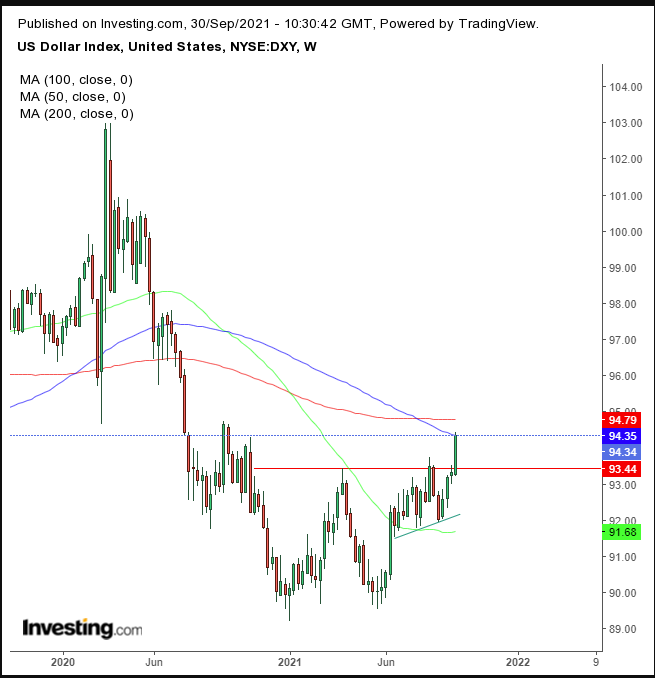The US dollar soared yesterday, hitting a one year high. The greenback's rise was powered by two tiggers—rising expectations of a decrease in the Federal Reserve’s bond purchases and fears of a US government shutdown in October, which sparked an equity selloff on Tuesday as investors rushed to safe havens, using the dollar as a risk-off asset.
From a technical perspective, the dollar just completed a massive reversal pattern.

Yesterday's USD move blew out a H&S top in play since June, itself a bullish signal for the currency.
Moreover, the dollar completed a double-bottom that's been building since November. Since June 2020 many analysts had been bearish on the global reserve currency. We, however, turned bullish on it on it this past February ahead of most of the rest of the market.
Indeed, it's been a volatile year for the dollar, but we're now providing another medium- to long-term bullish call. That doesn’t mean, however, that the market will not fluctuate.
After all, almost nothing goes up in a straight line. As such, traders must operate only according to a coherent trade plan that addresses their needs. Here are some basic guidelines.
Trading Strategies
Conservative traders should wait for the dollar to retest the 93 levels, where the neckline of the double-bottom resides, before going long.
Moderate traders would wait for the same pullback, for a better entry, if not for added confirmation.
Aggressive traders could go long at will, provided they accept the higher risk that accompanies the higher potential rewards of moving before everyone else. Here is an example of a trade:
Trade Sample – Aggressive Long Position
- Entry: 94
- Stop-Loss: 93
- Risk: 100 pips
- Target: 97
- Reward: 300 pips
- Risk:Reward Ratio: 1:3
Which stock should you buy in your very next trade?
AI computing powers are changing the stock market. Investing.com's ProPicks AI includes 6 winning stock portfolios chosen by our advanced AI. In 2024 alone, ProPicks AI identified 2 stocks that surged over 150%, 4 additional stocks that leaped over 30%, and 3 more that climbed over 25%. Which stock will be the next to soar?
Unlock ProPicks AI